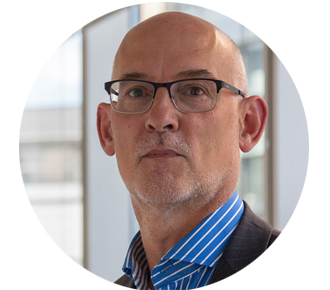Written by Chris Down, Sales & Marketing Manager at Oasys
Devotees of mindfulness stress the importance of the now; after all, the past can’t hurt you and worrying about the future will just stop you enjoying what is good now.
Of course, with the COVID-19 crisis gripping the world, it is perhaps less easy to enjoy the now. There are lots of things to be happy about if you look for them to prevent the bad news and negativity overwhelming you.
Lots of people are writing about how to cope with the current situation but I prefer to think further ahead and to consider fundamental changes that may come from the crisis and how we can re-engineer our world to suit.
The first question to address is whether we engineer our world to overcome immediate challenges or whether we use engineering to shape the world we want to live in?
As many office workers sit trying to work from a corner of their home, how many of them are missing their daily commute either by crowded public transport, sat in endless traffic jams in their cars or taking their lives in their hands cycling in a modern city?
Our infrastructure is designed to cope with current and predicted traveller numbers, and there are sophisticated computer software packages that can model capacity and predict when and where congestion will occur. These software tools are used to inform the design of ever more metro lines and stations and they work well. A problem with this approach is that designing and building infrastructure takes time and money with no guarantee that the predictions and assumptions the modelling was based on are still correct when the work is done, maybe up to a decade later.
Imagine that instead we use those same modelling tools to calculate the capacity of current infrastructure and to use that to advise timetable design and the working hours and working days of commuters?
We are all aware that our private cars spend far more time parked than they do moving, but we probably pay far less attention to how much public transport is parked or running almost empty away from the morning and evening rush hours.
What the COVID-19 pandemic may show us is just how many people need to be in their office all day every day. Could people work at home just a few days a week or only spend the morning or the afternoon in the office on certain days? Could more workers have a flexible day, starting and finishing earlier or later? Do offices need to be in the centres of large cities?
Home working doesn’t suit everyone of course. There will be some people who are desperate to get back to their office after just a few days of home working, either because they feel isolated or because their home is simply not suited to home working.
In times past, homes were built with space set aside for the occupants to work but now they are typically only places to eat and sleep. True, in the UK some “executive” homes have a “study” shown on the plans but this is often a room too small to be a bedroom or sitting/dining room given a new name… the architects don’t design them to be permanent places of work.
Replacing the entire housing stock with homes that include offices is clearly not an option but shared workspaces in residential areas that people can walk to may be. A future commute may be a walk to an office rather than a train journey to your office.
As we seek a new normal post pandemic, consider not just how engineering can create a better world with better buildings but how engineering can help forge a better society too.

